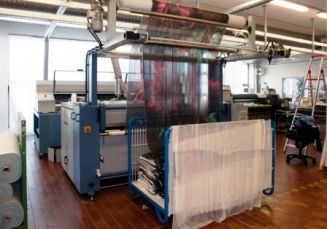India-Vietnam textile cooperation: A win-win situation

Moreover, the Indian government has recently re-started negotiations with the European Union for the early signing of a free trade agreement (FTA). Once it materialises, Indian goods, including textiles and apparel, will become more attractive to EU nations owing to reduction in duties.
Indian textile makers too can take advantage of TPP
The TPP agreement is likely to substantially increase Vietnam’s garment exports to member countries especially the US, where tariffs are expected to fall to zero from the current 17-18 per cent. Already, investors from several countries are making a beeline to invest in Vietnam in anticipation of benefits that the country will accrue once the agreement is signed and implemented.
Since India is not among the 12 countries negotiating the TPP, Indian yarn manufacturers and exporters would not be the first choice for Vietnamese manufacturers if the yarn-forward rule is accepted. It would make better business sense for Indian spinners to set up manufacturing base in Vietnam, where they have a ready market. Garment manufacturers will prefer to use locally-made yarn and fabric when it is readily available in the domestic market.
In short, investing in Vietnamese textile sector will present a ready market for Indian entrepreneurs while making their products available for Vietnamese garment producers.
Government support in Vietnam
With a population of more than 1.2 billion, which is ever increasing, and a growing middle-class, India is a huge market for garments. The younger generation in India is more and more embracing western wear over traditional attire, which is now worn only during special occasions. Vietnamese garment manufacturers and exporters can grab a share in this huge market for their own exports.
“Vietnam in recent years has signed several trade agreements with India, which has facilitated increased cooperation with India businesses. This exchange will serve as a bridge connecting Indian and Vietnamese businessmen to strengthen cooperation,” according to Bui Thanh An, deputy director of the Vietnam trade promotion agency (VIETRADE). In fact, garments and textiles was identified as one of the important areas of potential growth in bilateral trade during the state visit of Indian President Pranab Mukherjee to Vietnam in September 2014.
The joint communiqué issued at the end of the visit said India and Vietnam “agreed to enhance the economic partnership and strengthen the trade and investment linkages between the public and private sectors of both countries, including forging joint ventures”. Among agreements signed between the two countries during the visit were: one agreement on cooperation and mutual assistance in customs matters between the two governments; Dollar Credit Line Agreement between the Government of Vietnam and EXIM Bank of India; and an MoU on operating and jointly promoting direct air services between Vietnam Airlines (Vietnam) and Jet Airways (India).
































-Ltd..jpg?tr=w-120,h-60,c-at_max,cm-pad_resize,bg-ffffff)





.jpg?tr=w-120,h-60,c-at_max,cm-pad_resize,bg-ffffff)
.jpg?tr=w-120,h-60,c-at_max,cm-pad_resize,bg-ffffff)






